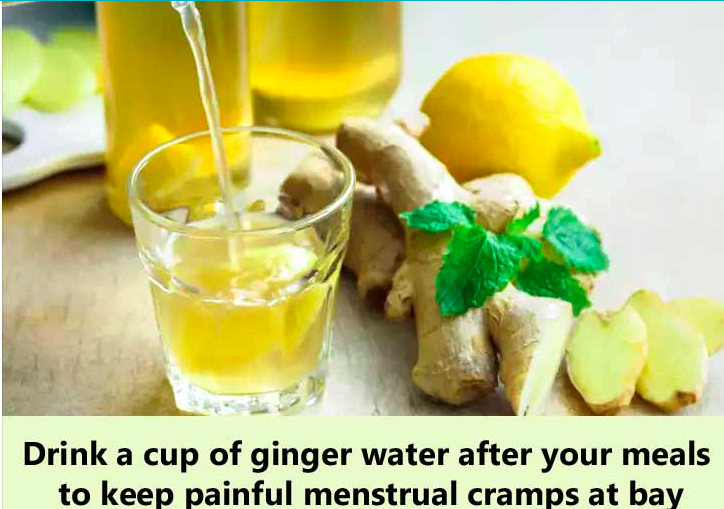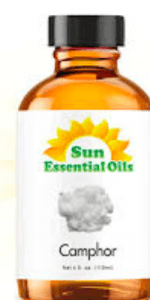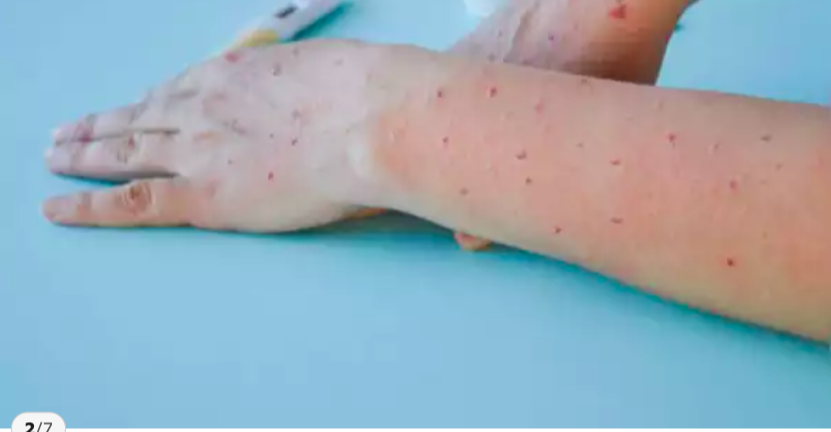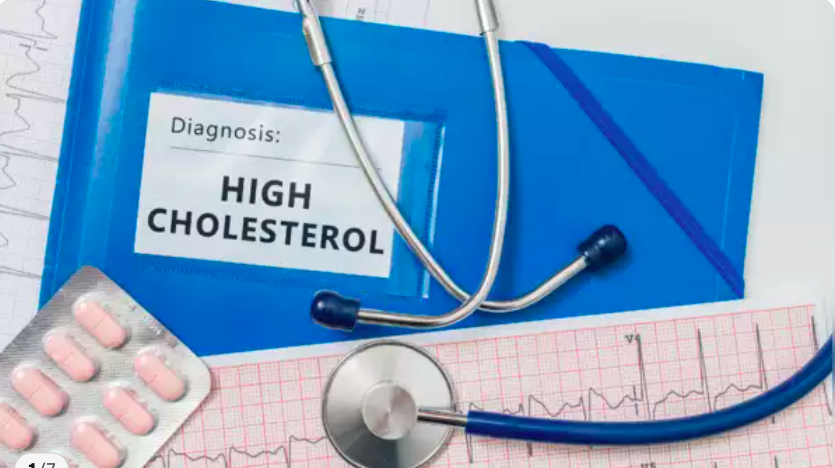Health
What Are Home Remedies For Mensural Pain?

Last Updated on October 23, 2022 by Nurse Vicky
What Are Home Remedies For Mensural Pain?
Some women swear by exercising, some swear by essential oils, and others simply say that massage therapy helps
This article will explore all of the options for menstrual pain relief. Read on for some of the most popular and effective techniques.
Read on to find out what works best for you! And remember that no remedy is perfect – there are always more effective options!
Exercise Relieves Period Pain

It is well-known that exercise is effective in relieving period pain. According to the U.S.
Department of Health and Human Services, exercise is important for reducing PMS symptoms and period pain. Moreover, it is said to increase blood circulation in the body and improve mood swings.
Women often experience pain during their menstrual cycles, some of which are minor and last for only a few days.
these methods are effective, exercise is even better. It is estimated that up to 90% of women suffer from period pain, which can affect the quality of one’s life and limit her participation in school or work.
Period pain is caused by the contraction of the womb lining, which releases fatty substances called prostaglandins.
The more prostaglandins produced, the more severe the pain is. Thus, it is suggested that exercising is beneficial to ease period pain.
Heat Application

Applying heat to the menstrual area may be a useful way to soothe menstrual pain. The process of applying heat helps the blood vessels relax, promoting more blood flow to the area.
Heat application also eases the pain and inflammation in the affected area. Furthermore, moist heat helps the muscle-tendon unit stretch, improving joint mobility.
However, this method can cause side effects, such as skin blistering. Another effective home remedy for menstrual pain is the use of heating pads.
They can help alleviate pain by increasing circulation and relaxing uterine muscles.
These heating pads work by increasing blood flow to the area and relieving the cramping. In addition, they can help you relax while you sleep.
This is one of the best options to relieve menstrual pain. Heat treatment can help you enjoy your menstrual cycle without the hassles and side effects of prescription medications.
Essential Oils

Menstrual pain is a common complaint that can interfere with daily activities and be exacerbated by menstrual cramps.
Some women turn to essential oils for menstrual pain, but they should keep in mind that they have certain risks as well as benefits.
Listed below are some of the essential oils that can be beneficial for easing period pain.
For primary dysmenorrhea, women usually experience pain and cramping for 12 to 72 hours.
The pain can make daily functions difficult and can lead to severe side effects such as diarrhea, vomiting, or fatigue.
Menstrual blends contain essential oils that are known to alleviate period pain, as well as muscular aches and stiffness. Many of these essential oils also combat inflammation and pain.
These blends are gluten-free and vegan and are also naturally anti-inflammatory. The essential oils found in these blends are highly effective for menstrual cramp relief and are ideal for those with sensitive skin.
These menstrual blends contain essential oils such as peppermint, wintergreen, clove, eucalyptus, cinnamon, and nutmeg.
Massage Therapy

women suffer from severe menstrual pain, headaches, and mood swings during their periods.
These symptoms are caused by muscle tension as a result of hormone releases.
Many seek medical treatment or make changes to their diet to alleviate pain. But despite all these efforts, painful symptoms often recur.
The best way to relieve menstrual pain naturally is to use massage therapy. Using this simple method can help you relax and enjoy your menstrual cycle.
The practice of massage therapy can help women relieve their menstrual cramps quickly.
The oil used in this massage is highly beneficial for reducing menstrual cramps, and it also has anti-inflammatory and antioxidant properties.
Getting a full body massage also helps reduce overall stress levels.
Massages can be particularly beneficial during menstrual pain as they help relax the muscles in the pelvic area.
Frequently Asked Questions
Does eating chocolate relieve muscle cramps?
One of the most popular sweets in the world is among the foods that have been shown to alleviate period pain by reducing the inflammation and muscle contractions that are associated with period cramps. It’s been shown that eating chocolate, particularly dark chocolate, can help relieve cramping.
What exactly is the source of period pain?
In the absence of oxygen, the tissues in your womb will produce chemicals that will cause you to feel pain. At the same time that your body is producing the chemicals that cause pain, it is also producing a different class of chemicals known as prostaglandins. These cause the muscles of the womb to contract more forcefully, which adds to the existing level of discomfort.
What kind of juice is best to drink during your period?
Oranges, thanks to their high vitamin C and calcium content, are an effective weapon against the aches and pains associated with premenstrual syndrome (PMS). If you’re not feeling well while you’re on your period, a glass of orange juice that’s been freshly squeezed can be a very refreshing drink.
How long does the pain of a period typically last?
Cramps typically start one or two days before your period and reach their peak approximately twenty-four hours after your period begins. They usually last anywhere between two and three days. It is possible to experience menstrual cramps in conjunction with other symptoms, such as nausea.
Are painful periods normal?
It is normal for a woman to experience some degree of pain, cramping, and discomfort while experiencing her period. Extreme pain that prevents you from going to work or school is not acceptable. Dysmenorrhea is another name for periods that are excruciatingly painful. Primary and secondary dysmenorrhea are the two classifications of this painful condition.
Why does the first day of my period hurt so much more than the other days?
The lining of the uterus produces naturally occurring chemicals known as prostaglandins, which are the chemical culprits behind this pain. The uterine blood vessels and muscles both tighten up as a result of the action of prostaglandins. The level of prostaglandins is at its highest on the very first day of a period.
What are some things that women should steer clear of during their periods?
Foods to stay away from Salt. The retention of water, which can be accompanied by bloating, is a direct result of eating a lot of salt. …\sSugar. Sugar is fine to consume in moderation, but consuming an excessive amount of it can lead to an increase in energy that is quickly followed by a decrease. Coffee, alcohol, foods that are too spicy for you, red meat, and foods that you don’t tolerate very well are on the list.
What is the most enjoyable activity for you to engage in while you are on your period?
Put a hot water bottle on the area of your lower back or lower abdomen. Massage your abdomen. Talk to your primary care physician about the possibility of taking an anti-inflammatory or pain reliever that is available over the counter. To assist in increasing the amount of blood that flows through your body, try doing some light exercise such as yoga, walking, or swimming.
Conclusion
Tell us anything you know about ” What Are Home Remedies For Mensural Pain?
Remember your health is wealth
Please, let us know your thoughts in the comments section.
Health
6 Daily Habits to Naturally Lower Cholesterol Levels
Health
Understanding the Rapid Spread of Monkeypox’s New Strain Clade 1b

Understanding the Rapid Spread of Monkeypox’s New Strain Clade 1b: Key Facts on Transmission, Symptoms, Severity, and Vaccination
Monkeypox, a viral disease with symptoms resembling smallpox, has recently gained attention due to the emergence of a newstrain, Clade 1b.
This article delves into the essential details about this new variant, including how it spreads, its symptoms, its severity, and the current state of vaccinations.
Our goal is to provide a comprehensive and clear understanding of this evolving situation, enabling readers to stay informed and prepared.
Monkeypox, once a rare and somewhat obscure disease, has recently become a significant public health concern due to the emergence of new strains.
Among these, Clade 1b has been noted for its rapid spread and distinct characteristics.
As we navigate through the complexities of this variant, it is crucial to grasp the fundamentals of its transmission, symptoms, severity, and preventive measures, including vaccination.
Understanding Monkeypox Clade 1b
What is Monkeypox?
Monkeypox is a zoonotic virus belonging to the Orthopoxvirus genus, which also includes smallpox.
First identified in monkeys, it can infect humans through close contact with infected animals or individuals.
While it shares similarities with smallpox, monkeypox tends to be less severe and less transmissible.
Clade 1b Overview
Monkeypox has several clades (strains), with Clade 1b being the most recent and notable for its rapid spread.
This strain has shown increased transmissibility compared to previous clades, raising concerns among public health officials.
Transmission of Clade 1b
Modes of Transmission
Clade 1b spreads primarily through:
- Direct Contact: Contact with bodily fluids, skin lesions, or contaminated surfaces of an infected person.
- Respiratory Droplets: Prolonged face-to-face interaction can lead to transmission through respiratory droplets.
- Animal Contact: Infected animals, particularly rodents and primates, can transmit the virus to humans.
Environmental Factors
Transmission rates can also be influenced by environmental factors such as:
- Crowded Living Conditions: Higher transmission rates are observed in densely populated areas.
- Sanitation Practices: Poor hygiene and sanitation can facilitate the spread of the virus.
Symptoms of Monkeypox Clade 1b
Early Symptoms
The symptoms of Clade 1b may resemble those of other viral infections, making initial diagnosis challenging.
Early symptoms include:
- Fever: A sudden onset of high temperature.
- Headache: Severe headaches that can persist for days.
- Muscle Aches: Generalized muscle pain and discomfort.
- Fatigue: Extreme tiredness and weakness.
Rash and Skin Lesions
A defining feature of monkeypox is the rash, which typically progresses through several stages:
- Macules: Flat, discolored spots on the skin.
- Papules: Raised bumps.
- Vesicles: Fluid-filled blisters.
- Pustules: Pus-filled lesions that eventually crust over.
Severe Symptoms
In more severe cases, symptoms may include:
- Encephalitis: Inflammation of the brain, leading to neurological symptoms.
- Pneumonia: Infection of the lungs that can cause difficulty breathing.
- Secondary Infections: Bacterial infections that may complicate the healing process.
Severity of Clade 1b
General Outlook
Clade 1b has been associated with a higher transmission rate and more severe outcomes compared to other strains. However, the overall severity can vary widely among individuals.
Factors influencing severity include:
- Immune System Status: Individuals with weakened immune systems or pre-existing conditions may experience more severe symptoms.
- Age: Young children and elderly individuals are at higher risk of severe illness.
- Timeliness of Medical Care: Early medical intervention can significantly affect the outcome.
Mortality Rates
The mortality rate for Clade 1b is currently under study, but initial data suggest it may be higher than previous strains. Prompt medical attention and supportive care are crucial in reducing the risk of severe outcomes.
Vaccination and Prevention
Current Vaccines
Vaccination is a key strategy in controlling the spread of monkeypox.
The following vaccines are relevant:
- Smallpox Vaccine: The smallpox vaccine is effective against monkeypox due to the similarities between the viruses. It provides protection for those who have been recently vaccinated or who received it in the past.
- Monkeypox-Specific Vaccine: Research is ongoing into vaccines specifically targeting monkeypox, with several candidates showing promise in trials.
Vaccination Recommendations
Public health authorities recommend vaccination for:
- Healthcare Workers: Individuals who are at higher risk due to their profession.
- High-Risk Populations: People in areas experiencing outbreaks or those with frequent exposure to infected individuals.
Preventive Measures
In addition to vaccination, preventive measures include:
- Good Hygiene: Regular handwashing and use of hand sanitizers.
- Avoiding Contact: Minimizing close contact with individuals displaying symptoms or with infected animals.
- Isolation: Infected individuals should isolate themselves to prevent the spread of the virus.
Conclusion
The emergence of Monkeypox Clade 1b represents a significant challenge to global health. Its increased transmissibility and potential for severe outcomes highlight the importance of staying informed and proactive.
By understanding its transmission, symptoms, and preventive measures, individuals and communities can better protect themselves and mitigate the impact of this new strain.
FAQs
1. What makes Clade 1b different from other monkeypox strains?
Clade 1b is noted for its increased transmissibility and potentially more severe outcomes compared to other strains.
It spreads faster and may lead to more serious health issues, necessitating closer monitoring and enhanced preventive measures.
2. How can I tell if I have monkeypox or another viral infection?
Monkeypox often begins with flu-like symptoms and progresses to a distinct rash.
If you experience these symptoms, especially if you’ve been in contact with someone who has monkeypox or are in an outbreak area, seek medical advice for accurate diagnosis and testing.
3. Is the smallpox vaccine effective against Monkeypox Clade 1b?
Yes, the smallpox vaccine offers protection against monkeypox, including Clade 1b, due to the similarities between the two viruses.
However, its effectiveness may vary based on factors such as time since vaccination and individual health conditions.
4. Are there any new vaccines specifically for monkeypox?
Research is ongoing to develop and approve vaccines specifically targeting monkeypox.
Several candidates are in various stages of clinical trials, with some showing promising results in enhancing protection against monkeypox strains, including Clade 1b.
5. What should I do if I suspect I have monkeypox?
If you suspect you have monkeypox, contact a healthcare provider immediately. They can guide you through testing, diagnosis, and appropriate care.
In the meantime, practice good hygiene and avoid close contact with others to prevent spreading the virus.
References:
Health
Understanding the Low Risk of Mpox Outbreak in India and Our Preparedness Measures

-

 Trending Stories1 year ago
Trending Stories1 year agoCDC: 1 in 4 Americans Still COVID-Free by End of 2022
-

 Health5 years ago
Health5 years agoMeghan Trainor Shares Motivational New Song ‘Blink’
-

 Health2 years ago
Health2 years agoHow Long Does Monkey Pox Last Before It Surfaces in the Body?
-

 Health2 years ago
Health2 years agoWhat Causes Swollen Body? Understanding Edema and its Triggers
-

 Health4 months ago
Health4 months agoHow Do Pawpaw Seeds Support Cardiovascular Health?
-

 Health3 years ago
Health3 years agoNutrition and the Importance of a Fitness Program – 3 Things to Know
-

 Health3 years ago
Health3 years ago5 Weird Reasons Why Pimples Disappear After Marriage
-

 Health2 years ago
Health2 years agoHealth Benefits Of Pawpaw Seed? 7 Things To Know







